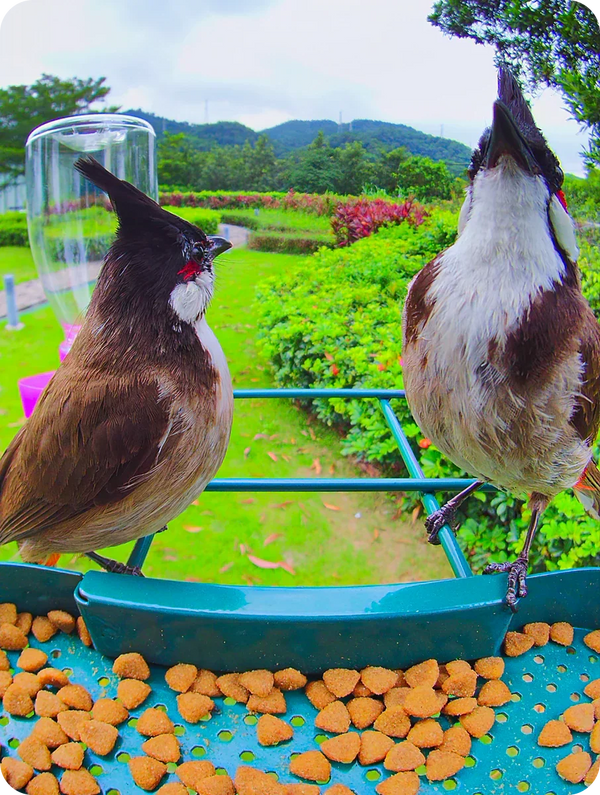Discover the Secret to Attracting Stunning Hummingbirds to Your Garden!
Hummingbirds are one of nature's most captivating creatures, known for their dazzling colors and incredible flying abilities. These tiny birds play a significant role in our garden ecosystems, acting as pollinators for a variety of plants. The joy of seeing a hummingbird flit around your garden, sipping nectar from flowers or a specially designed hummingbird feeder, is an experience that can bring immense satisfaction to any garden enthusiast. Setting up a hummingbird feeder not only invites these beautiful birds into your space but also contributes to the health of your local ecosystem. In this article, we will explore the importance of hummingbird feeders, how to choose the right one, and tips for maintaining them, ensuring that your garden becomes a haven for these enchanting avian visitors.

The Importance of Hummingbird Feeders
Hummingbird feeders serve as a vital resource for these birds, especially during migration seasons when natural food sources may be scarce. These birds primarily consume nectar, which provides the energy they need for their remarkable flight patterns. By providing a feeder filled with nectar, you can attract hummingbirds and support their feeding habits. It’s fascinating to note that hummingbirds have excellent memories, allowing them to remember the locations of feeders. They are also known to prefer feeders that are easy to access and filled with fresh nectar. Seasonal aspects are crucial as well; during spring and summer, when flowers bloom, hummingbird activity increases. Thus, setting up your feeder at the right time can maximize your chances of attracting these delightful creatures.
Choosing the Right Hummingbird Feeder
When it comes to selecting a hummingbird feeder, there are several types to consider: tube feeders, basin feeders, and window feeders. Tube feeders are often favored for their ability to minimize leakage and keep nectar clean, while basin feeders allow multiple birds to feed simultaneously. Window feeders, on the other hand, provide a unique vantage point for birdwatching right from your home. Each type has its pros and cons; for instance, tube feeders are typically more durable but may be harder to clean, whereas basin feeders are easier to fill but can become dirty quickly. Personal experiences shared by friends have shown that having a variety of feeders can increase the chances of attracting different species of hummingbirds. Ultimately, the choice depends on your space, aesthetic preferences, and how much effort you're willing to put into maintenance.
Materials and Design
The materials used in hummingbird feeders can significantly impact their durability and ease of cleaning. Many feeders are made from glass, plastic, or metal, each offering different benefits. Glass feeders are often more durable and aesthetically pleasing, but they can be heavier and more fragile. Plastic feeders are lightweight and less prone to breakage, but they may not last as long in direct sunlight. Regardless of the material, it’s essential to choose a feeder with a design that attracts hummingbirds. Feeders with bright colors, particularly red, are known to draw these birds in. Additionally, feeders with perches can encourage hummingbirds to linger longer, giving you a better opportunity to enjoy their beauty.
Making Your Own Hummingbird Nectar
Creating your own hummingbird nectar is a simple and cost-effective way to maintain your feeder. The recipe is straightforward: mix one part granulated white sugar with four parts water. Boil the mixture for a few minutes to ensure that the sugar dissolves completely, and then let it cool before filling your feeder. It’s crucial to avoid using food coloring or artificial sweeteners, as these can be harmful to hummingbirds. Friends who have tried this recipe have noted that their feeders attracted more birds compared to store-bought nectar. Additionally, homemade nectar can be stored in the refrigerator for up to a week, making it easy to keep your feeder filled with fresh nectar.
Placement and Maintenance of Hummingbird Feeders
To maximize the visibility and accessibility of your hummingbird feeder, placement is key. Ideally, hang your feeder in a shaded area away from direct sunlight, as this helps to keep the nectar fresh longer. Positioning it near colorful flowers can also attract more birds. It’s advisable to place the feeder at least five feet off the ground, which makes it safer from predators. Regular maintenance is crucial; clean your feeder every few days to prevent mold and bacteria growth. During peak feeding seasons, a weekly cleaning may be necessary. Additionally, refill the feeder with fresh nectar every week, or more often if you notice it emptying quickly. By taking these steps, you can create a welcoming environment for hummingbirds to thrive in your garden.
Creating a Welcoming Habitat for Hummingbirds
Attracting hummingbirds to your garden can be a rewarding experience that enhances your outdoor space's beauty and ecological health. By investing in the right hummingbird feeder and ensuring proper placement and maintenance, you can create an inviting environment for these gorgeous birds. Remember to make your own nectar and keep your feeders clean to enjoy the delightful visits of hummingbirds in your garden. So, gather your supplies, choose your ideal feeder, and get ready to welcome these enchanting creatures into your life!







